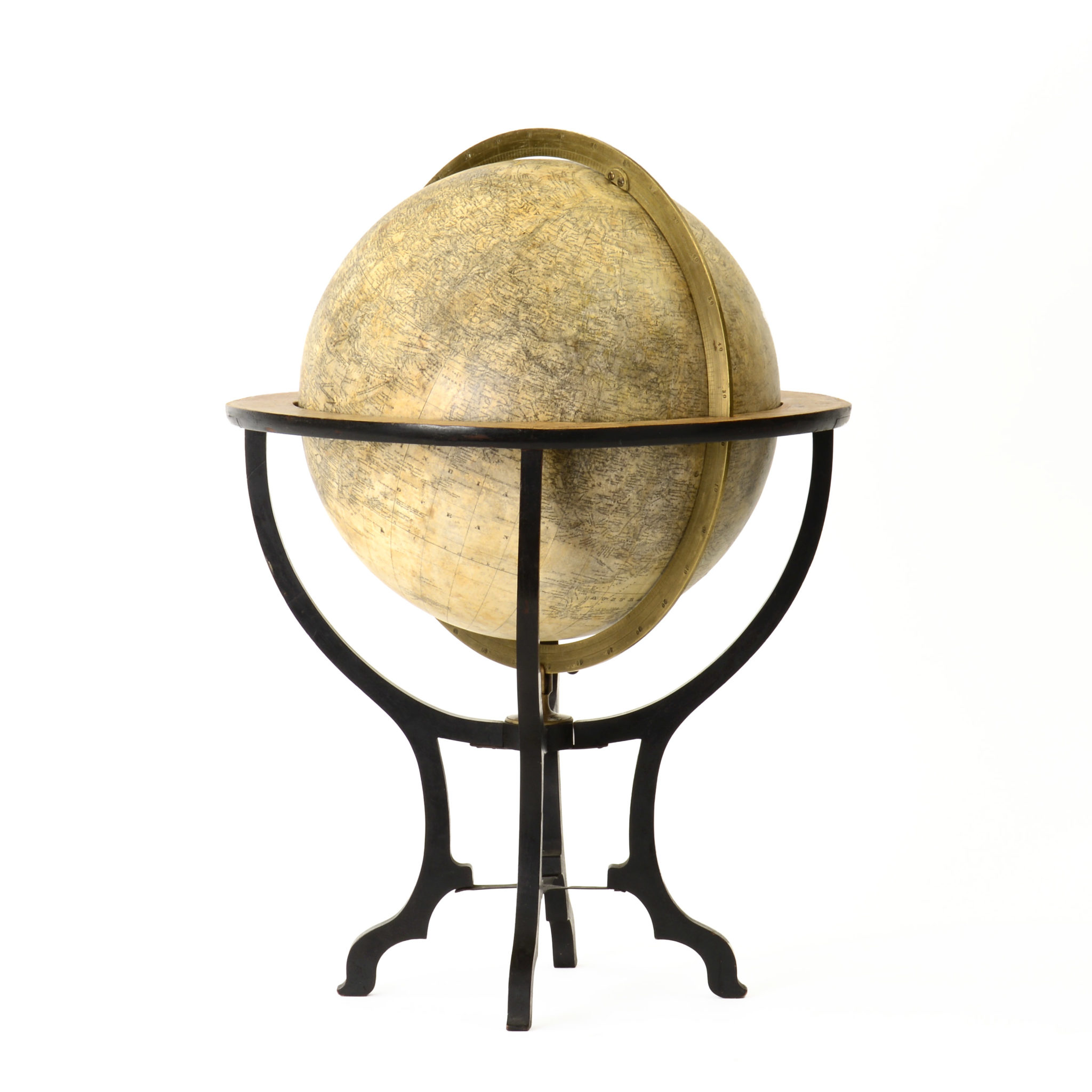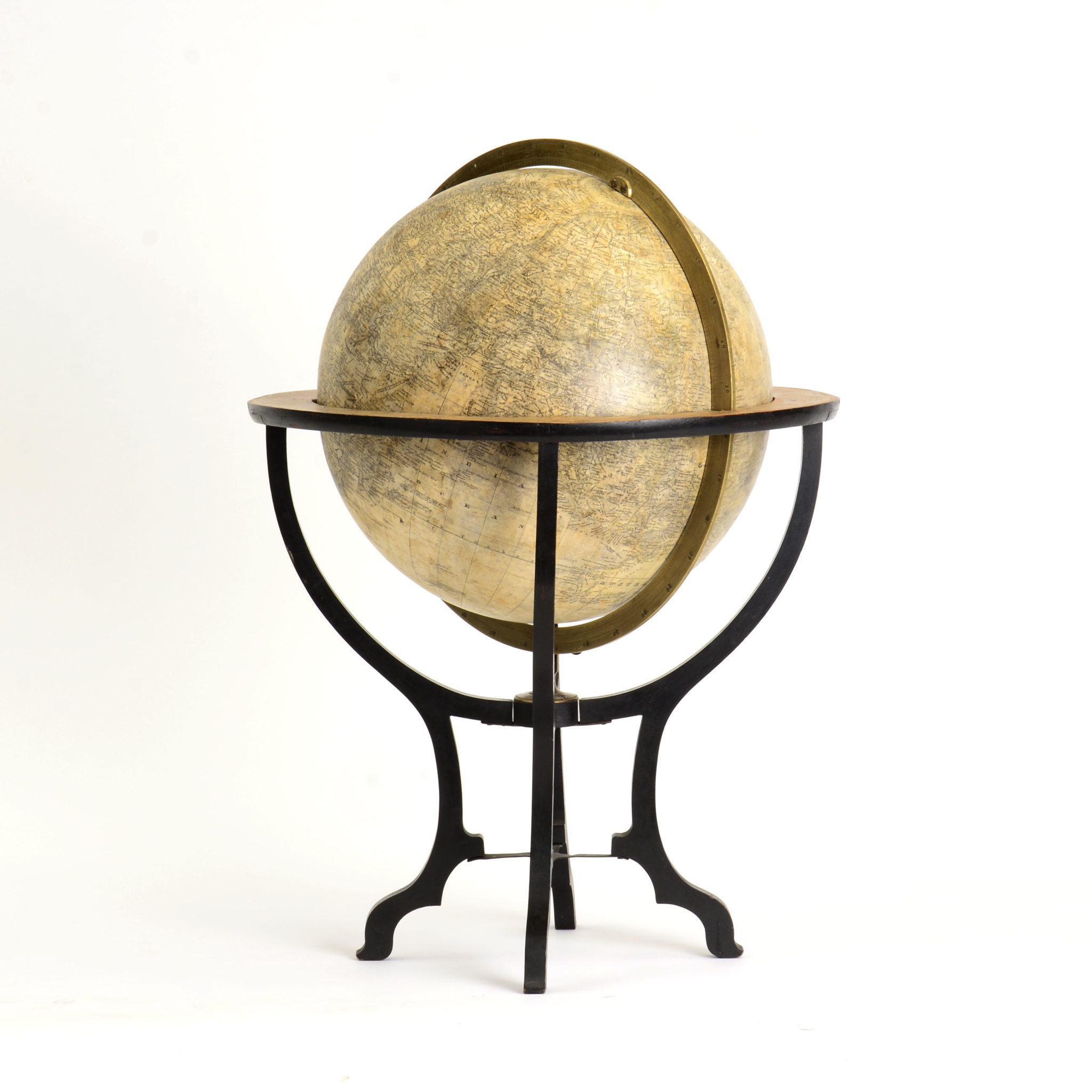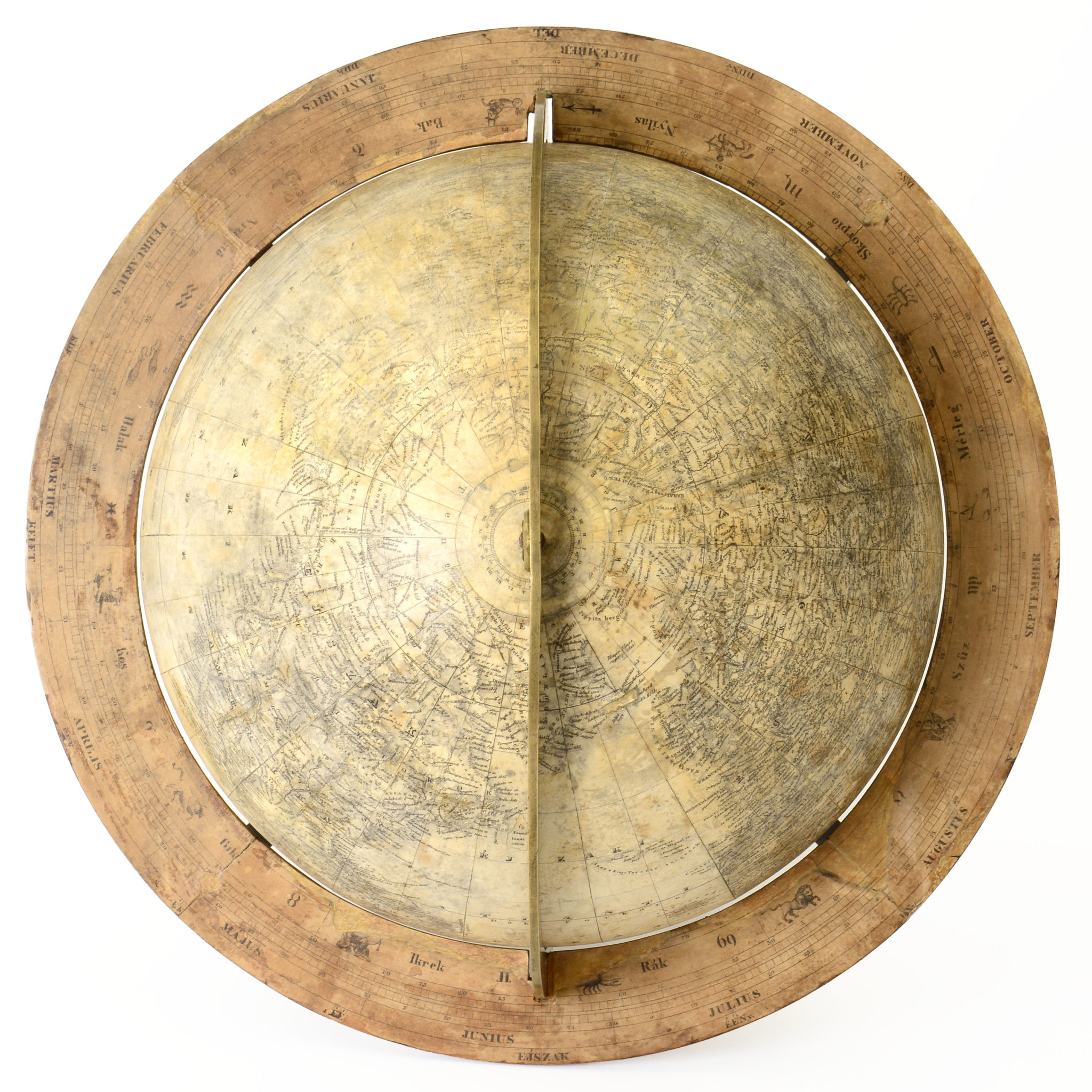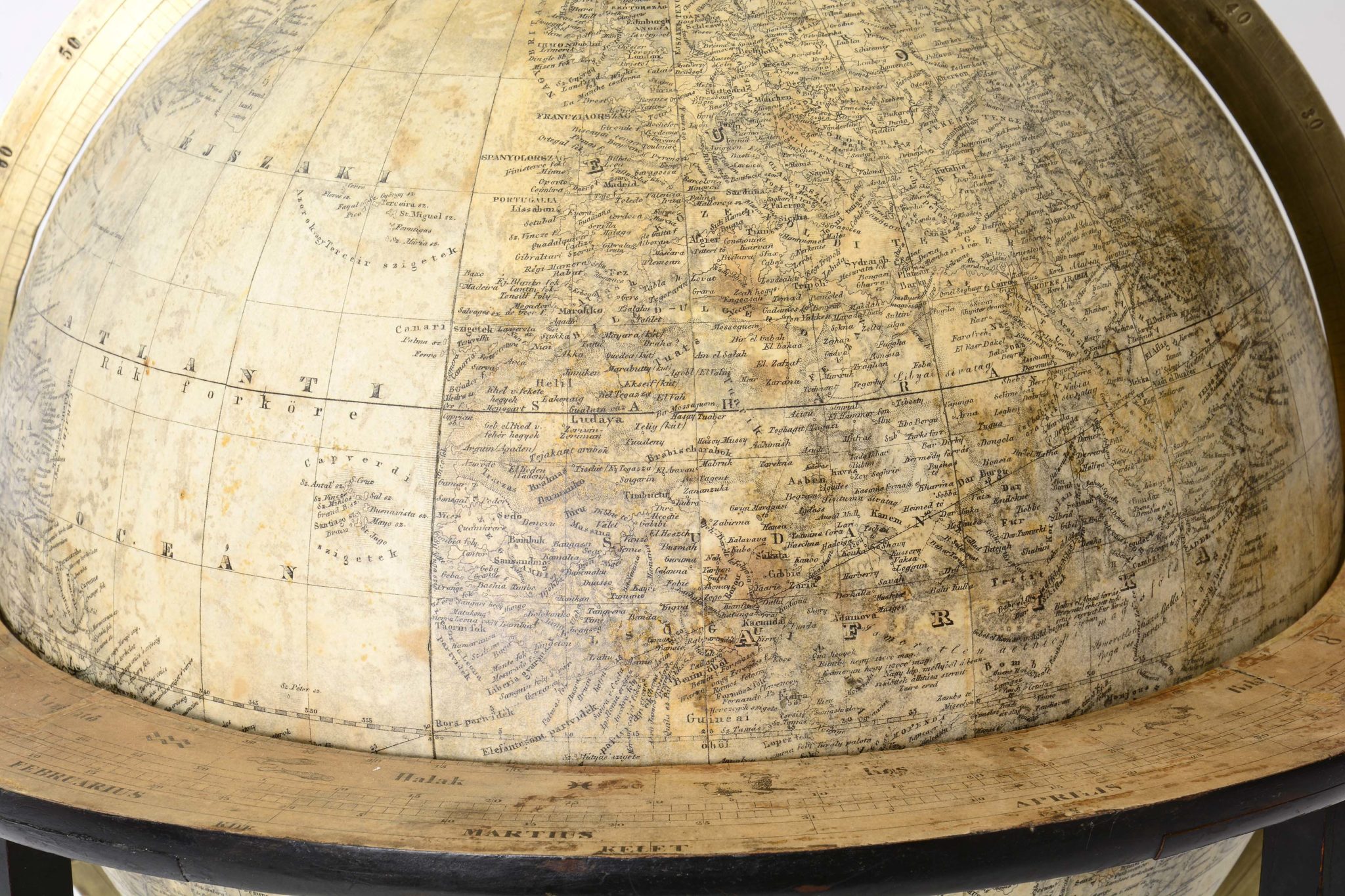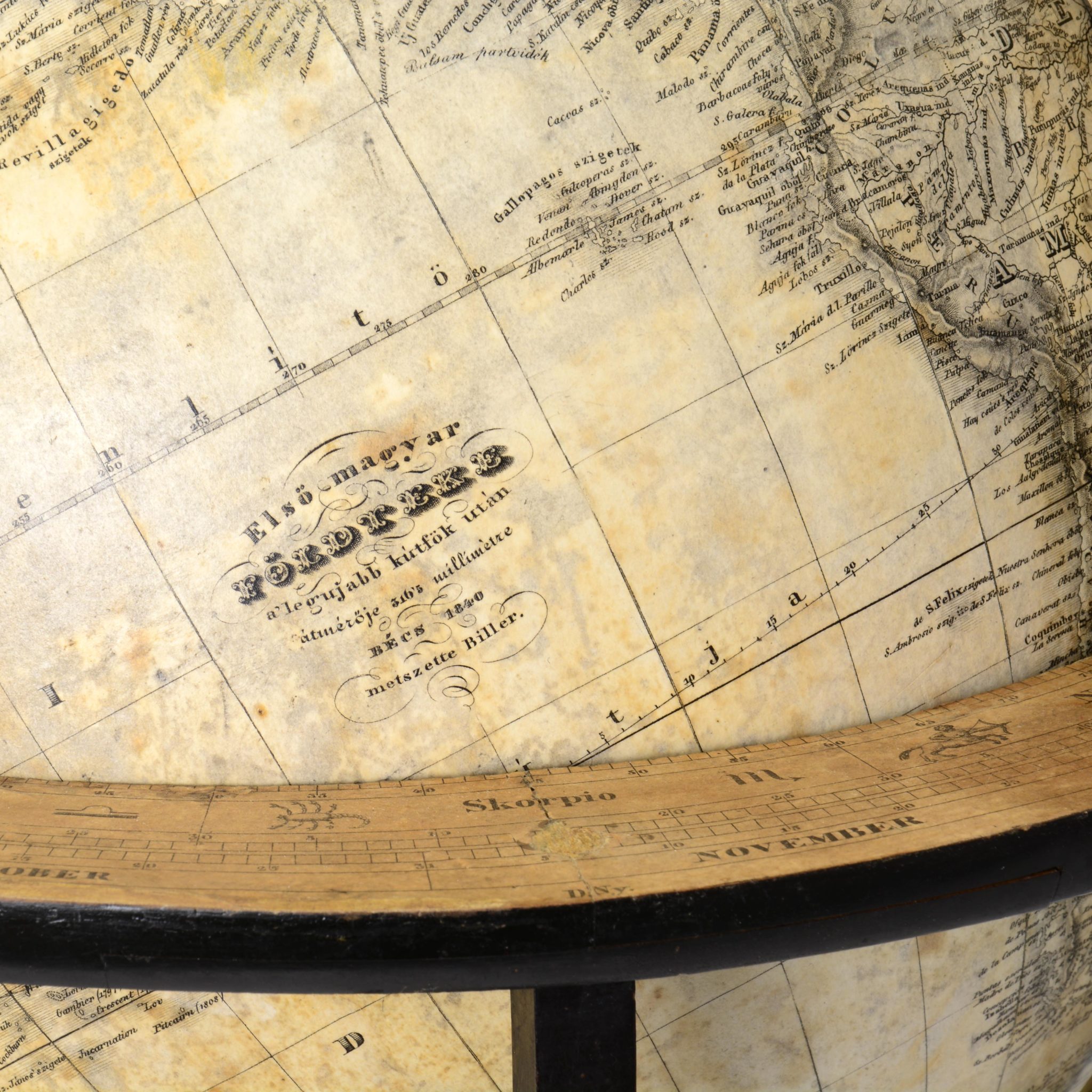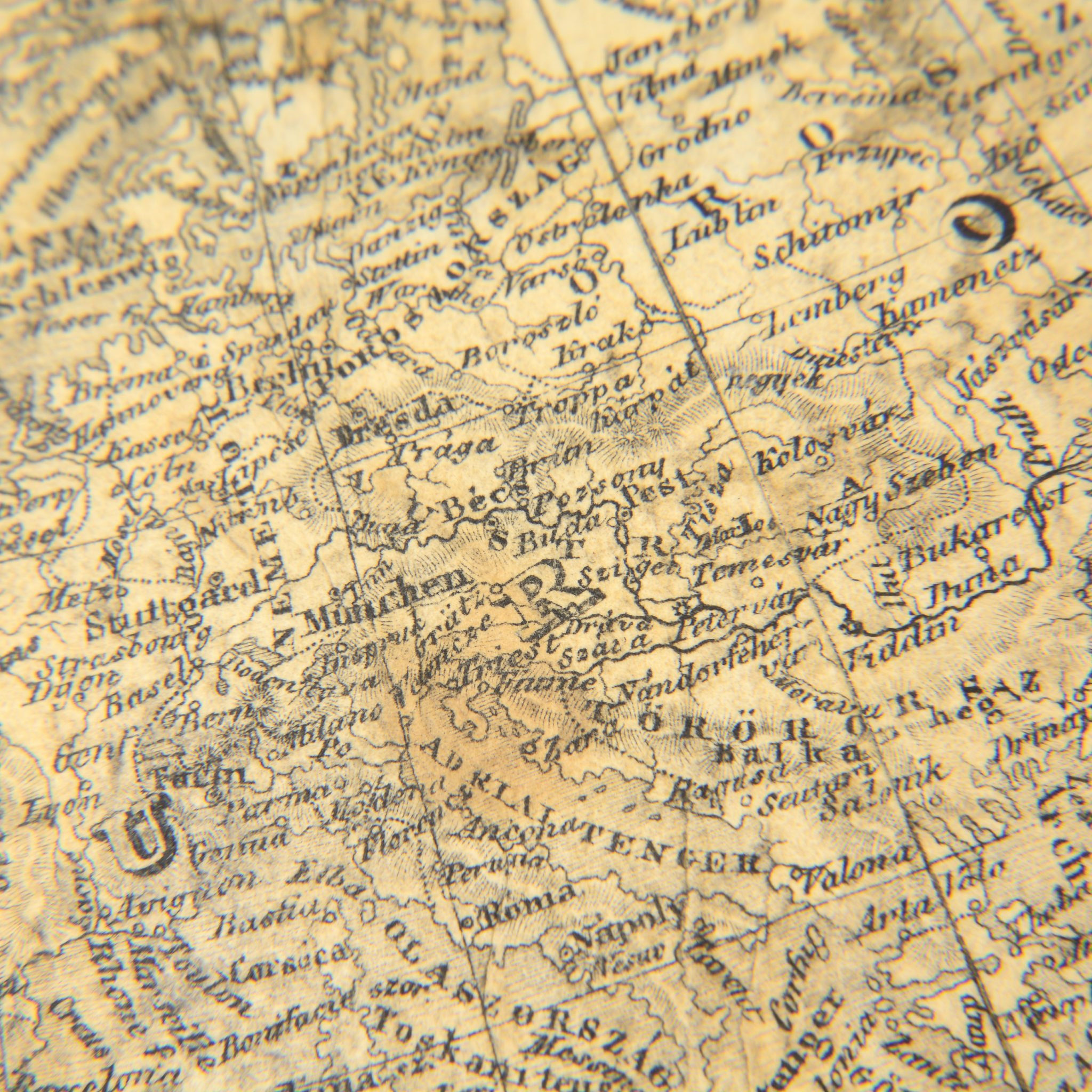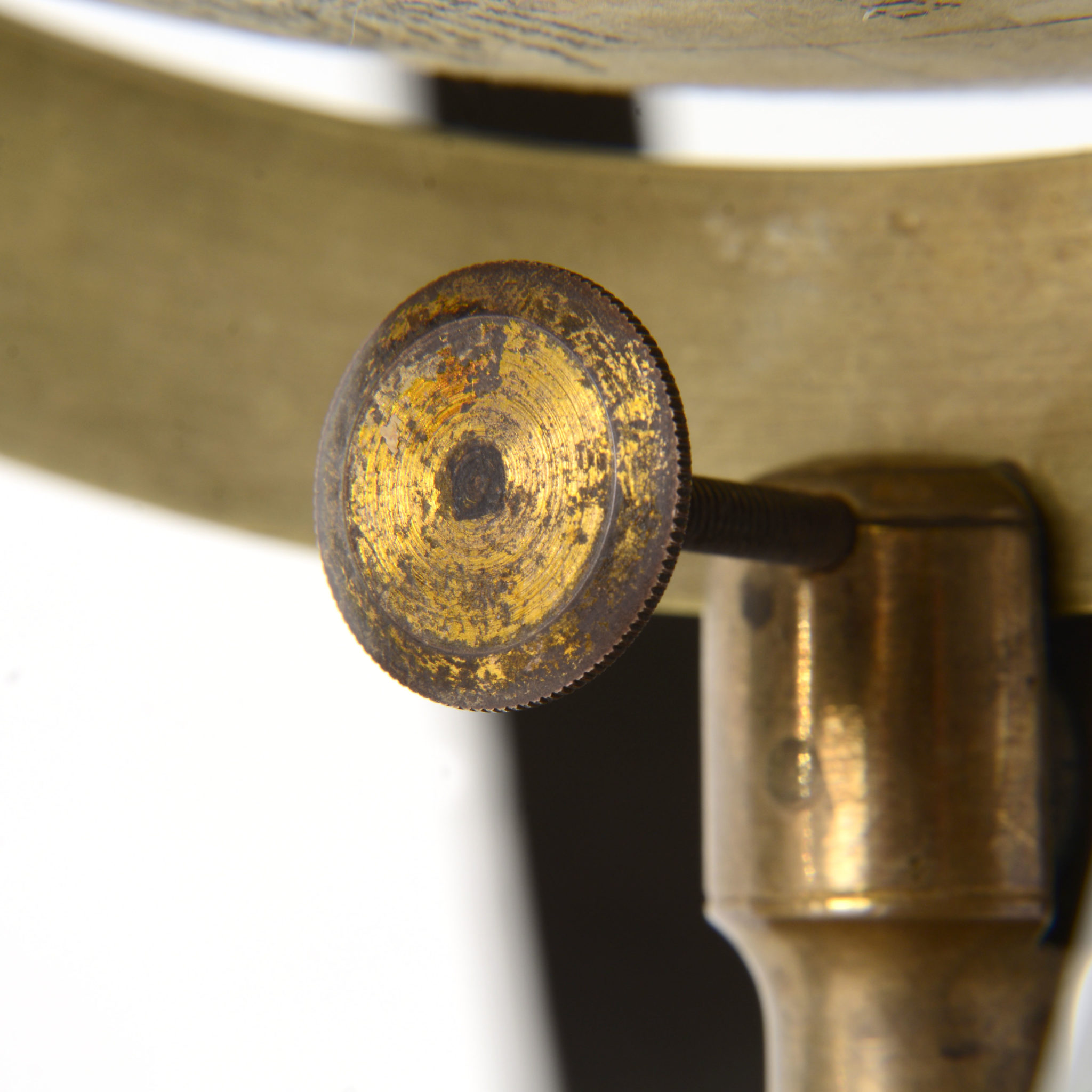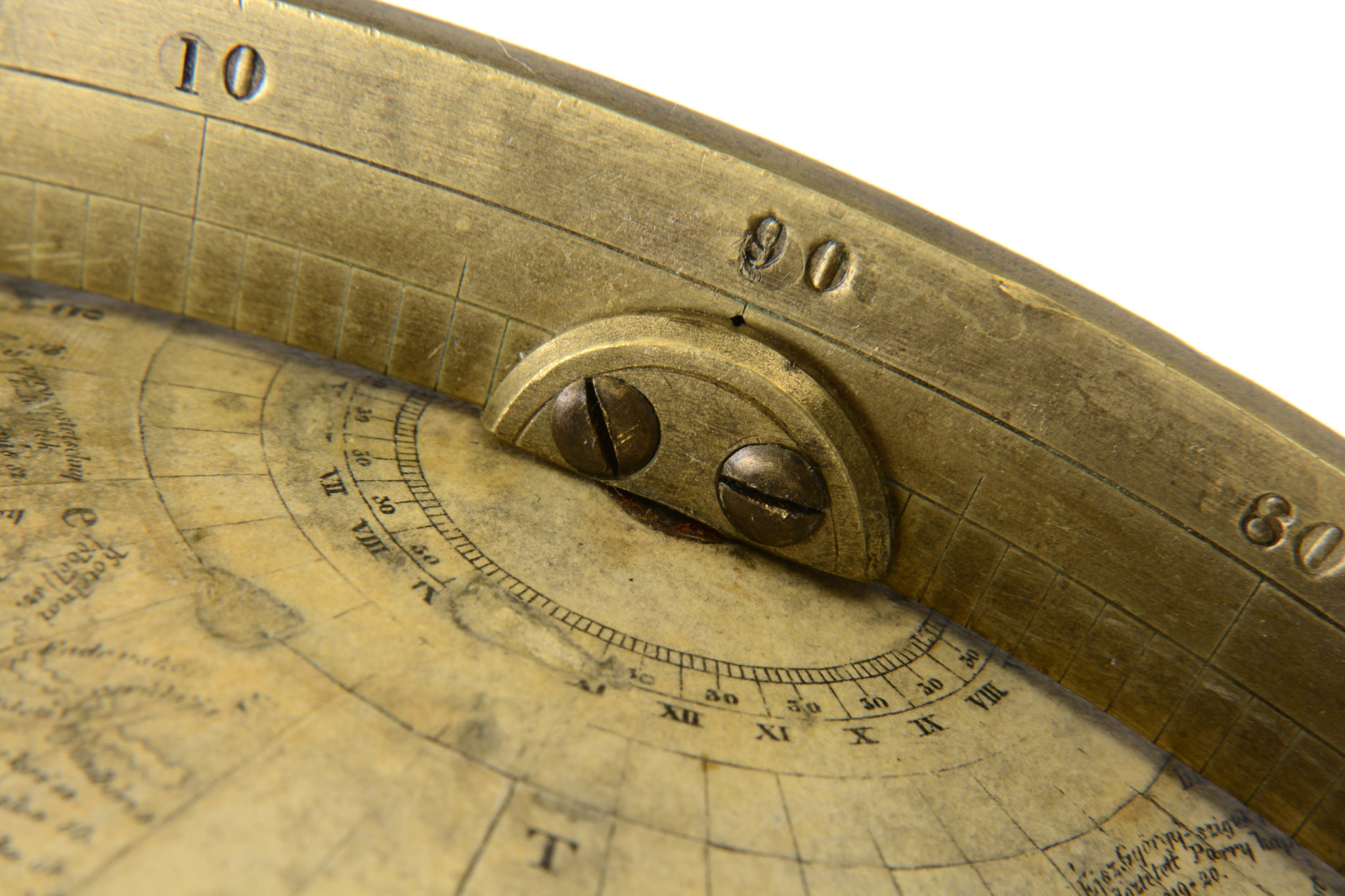Description
The first printed Hungarian terrestrial Globe – the BATTHYÁNY-NAGY-BILLER Globe
published in Vienna 1840
„Elso magyar / FÖLDTEKE / a’ legújabb kútfök után / atméröje 316,5 millimètre / BECS 1840, / metszette BILLER.
(First Hungarian globe after the most recent sources, diameter 316,5 millimeters, Vienna 1840, engraved by Biller).
The globe is made up of 18 printed paper segments and two polar calottes on papermache/plaster sphere, divided brass meridian circle, original four-legged ebonized wood stand with horizon.
This exceptional globe is one of c. 128 (of 200 planned) produced and one of very few remaining. The project of making a Hungarian terrestrial globe was fincanced by Count Kázmér Batthyány (1807-1854) and produced by Károly Nagy, Eutimius Kirrillovics, Bernhard Biller jr. and Dénes Lukács (1816-1868). The famous Hungarian poet Mihály Vörösmarty (1800-1855) checked the way geographical names were written in Hungarian. An important piece of Hungarian history.
Diameter 31,65 cm (1 Wiener Fuß).
Lit.: LAJOS BARTHA, The first educational Globes in Hungarian language 1800-1850; in: DER GLOBUSFREUND 43/44, Dez. 1995.
Der erste gedruckte Erdglobus in ungarischer Sprache – der Batthyány-Nagy-Biller-Erdglobus
Wien 1840, „Elso magyar / FÖLDTEKE / a’ legújabb kútfök után / atméröje 316,5 millimètre / BECS 1840, / metszette BILLER.“ (Erster ungarischer Globus nach den neuesten Nachrichten, Durchmesser 316,5 mm, Wien 1840, gestochen von Biller.) 18 Papiersegmente und zwei Polarkalotten, Vollkreismeridianring aus Messing, vierfüßiges, ebonisertes Holzgestell mit Horizontring.
Dieser Globus ist einer von 200 projektierten (und ca. 128 produzierten) Globen, die von Graf Kázmér Batthyány (1807-1854) finanziert, 1830-1838 von Károly Nagy entworfen, von Eutimius Kirrillovics gezeichnet und Bernhard Biller jr. gestochen und dann von Dénes Lukács (1816-1868) in Wien produziert wurden. Der berühmte ungarische Dichter Mihály Vörösmarty (1800-1855) half mit der Übersetzung geographischer Namen ins Ungarische. Dieser Erdglobus ist als erster gedruckter Erdglobus in ungarischer Sprache ein wichtiges Zeugnis der ungarischen Identität.
Durchmesser 31,65 cm (1 Wiener Fuß).
Lit.: LAJOS BARTHA, The first educational Globes in Hungarian language 1800-1850; in: DER GLOBUSFREUND 43/44, Dez. 1995.
Ask the Dealer
Dealer information
 WissenschaftlichesKabinet
WissenschaftlichesKabinet
Wissenschaftliches Kabinett
The Wissenschaftliches Kabinett is based in the inner city of Vienna, Austria and was established in 1988 by Dr. Max Weber. Later it was taken over by Simon Weber-Unger who specializes in antique scientific and natural history antiques. The Wissenschaftliches Kabinett Simon Weber-Unger exhibits at the Hofburg Antique Fair in Vienna, the Residenz Antique Fair in Salzburg, the antique scientific instrument fair in London and at antique fairs in Zurich and Munich. Simon Weber-Unger is the head of the antique scientific instrument department and antique camera department at the auction house Dorotheum in Vienna and has published articles about scientific instruments in several magazines.


